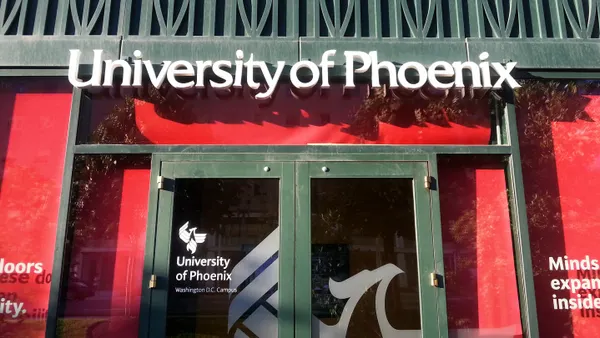The rise of emerging technologies is transforming America's job market, with some projections estimating that automation could displace as many as 30% of workers worldwide by 2030.
To address the needs of a growing population that will require new skills in order to compete in the workforce, some colleges and universities are reevaluating how they design their curriculum. And successfully preparing workers for the changing economy requires colleges to engage in unorthodox and bold thinking, said Waded Cruzado, the president of Montana State University, during a panel session about the future of the workforce held Wednesday at the annual Educause conference, in Denver.
Machines will perform almost half (42%) of all task hours in the workplace by 2022, compared to 29% today, leading to some 75 million jobs being displaced and 133 million new roles emerging, according to the World Economic Forum. Colleges will need to create a comprehensive agenda to teach new skills that meets the demand of these learners, said Karen Stout, president and CEO of Achieving the Dream, a nonprofit focused on improving outcomes for community college students.
Changing programming
The higher education industry is not yet designing its programming around what has been called the 60-year curriculum, Stout said, which is the idea that colleges should offer lifelong learning opportunities for workers so they can thrive in an ever-evolving economy.
To serve this type of student, more colleges are looking at shorter-term credentials, either in place of or as a part of traditional degree programs. That's because these nontraditional learners are "looking for the ability to get recognition for their learning much more quickly than a four-year cycle," said Lois Brooks, chief information officer and vice provost for information technology at the University of Wisconsin-Madison.
The idea of microcredentials, or badges, has gained traction in recent years as a means to address those needs, with more colleges offering them for both hard and soft skills. To better serve their students, Stout said, colleges should not only pinpoint which industries are in-demand when crafting their programming but also look to what skills and competencies those jobs require so they can offer specific credentials that will encourage employers to hire their graduates.
"Is there a way we can capture not just the reaction to a curriculum but also the signaling around what type of credentials might be needed?" Stout asked. "What types of ways can we validate learning outside of the degree that an employer would accept and think was relevant?"
Private-sector partnerships
More strategic partnerships between local employers and colleges can be critical to improving students' workforce readiness. One way to do so is to expand employers' roles in crafting college programming, Stout said. As a former community college president, she said she witnessed programs being "quickly adapted" to fit what employers had indicated they wanted, only for their needs to change, blunting the college's return on investment. "Very often employers aren't asked to put skin in the game, so it's monetary support as well as thought leadership support that has to be captured somehow," Stout said.
Some employers have been successfully working with higher education institutions to better design programming. Miami Dade College, for example, has partnered with the energy industry to build curriculum, the panel noted. However, the idea of involving the private sector in curriculum development has been met with concern from some corners of the industry, though the notion that colleges are responsible for their graduates' employability is gaining traction.
With companies designing their own curriculum or factoring heavily into courses designed by a college or university, questions remain about how to foster competition when companies build a curriculum specific to their own workplace needs that they may not be inclined to share with other competitors in their industry. Other industry-driven partnerships have also raised concerns. The technology industry, for example, is overrepresented with workers from colleges such as Stanford University and the California Institute of Technology due to their proximity to Silicon Valley, said Michele Norris, founder of The Race Card Project, leaving some uncertainty about how to expand successful partnerships.














